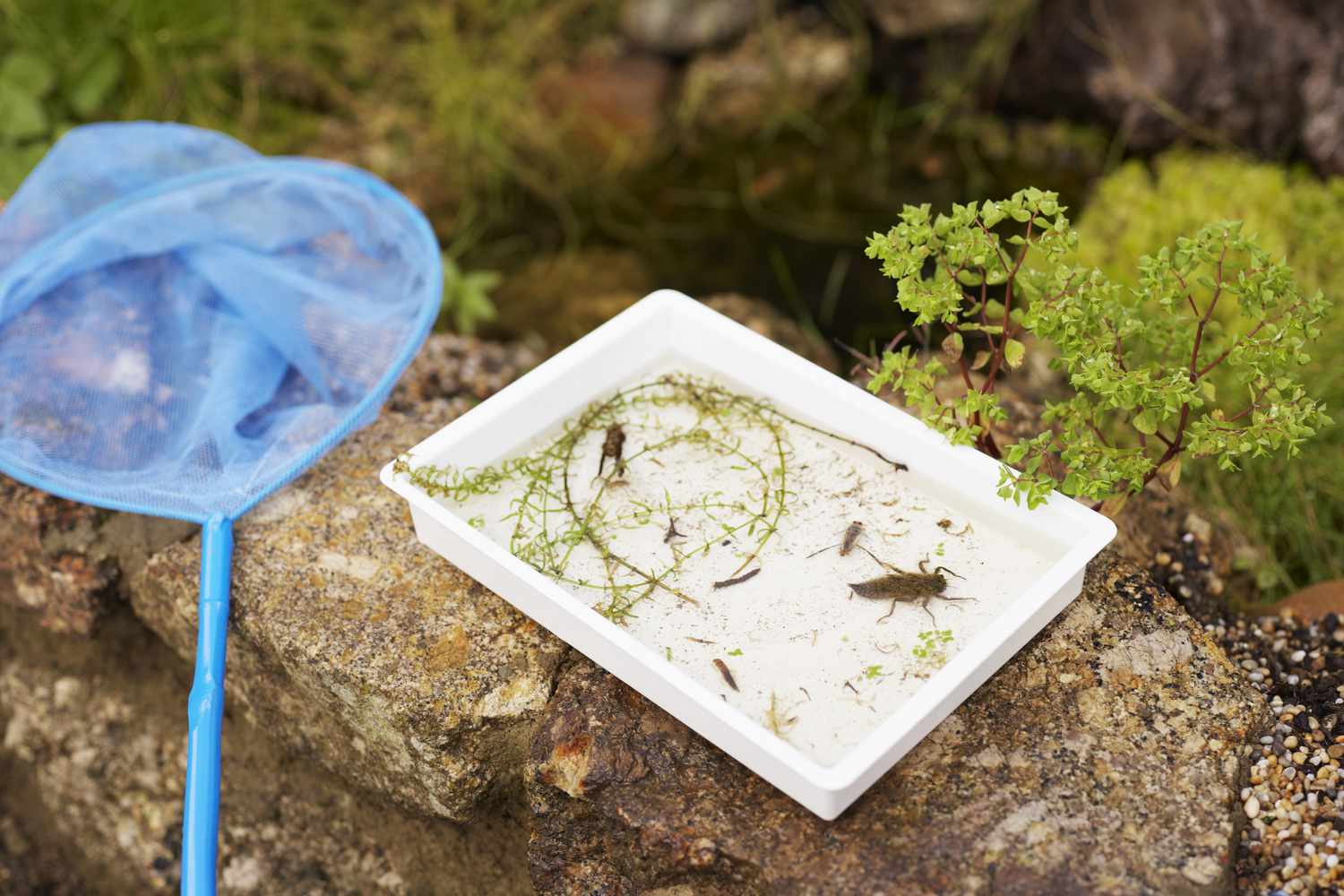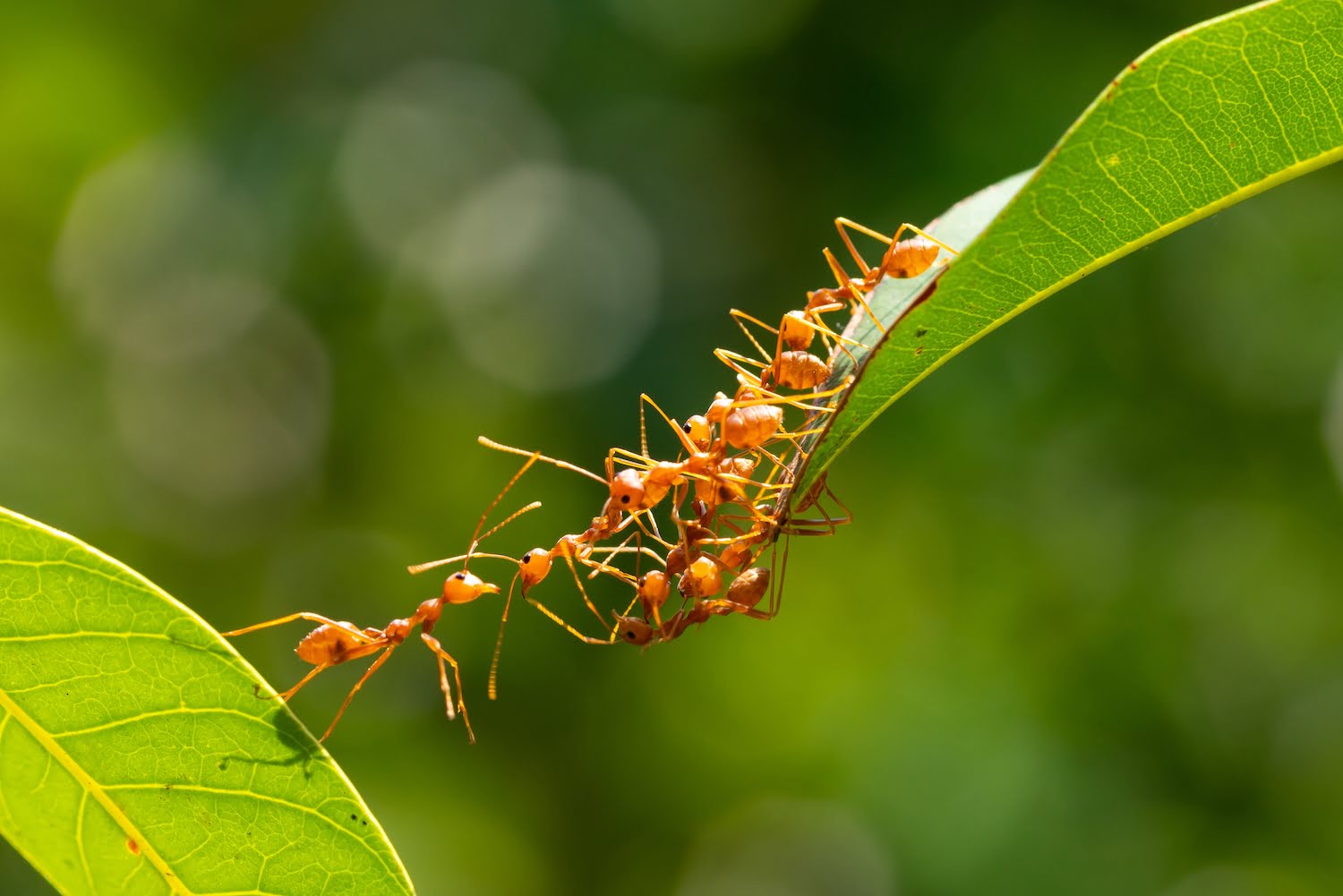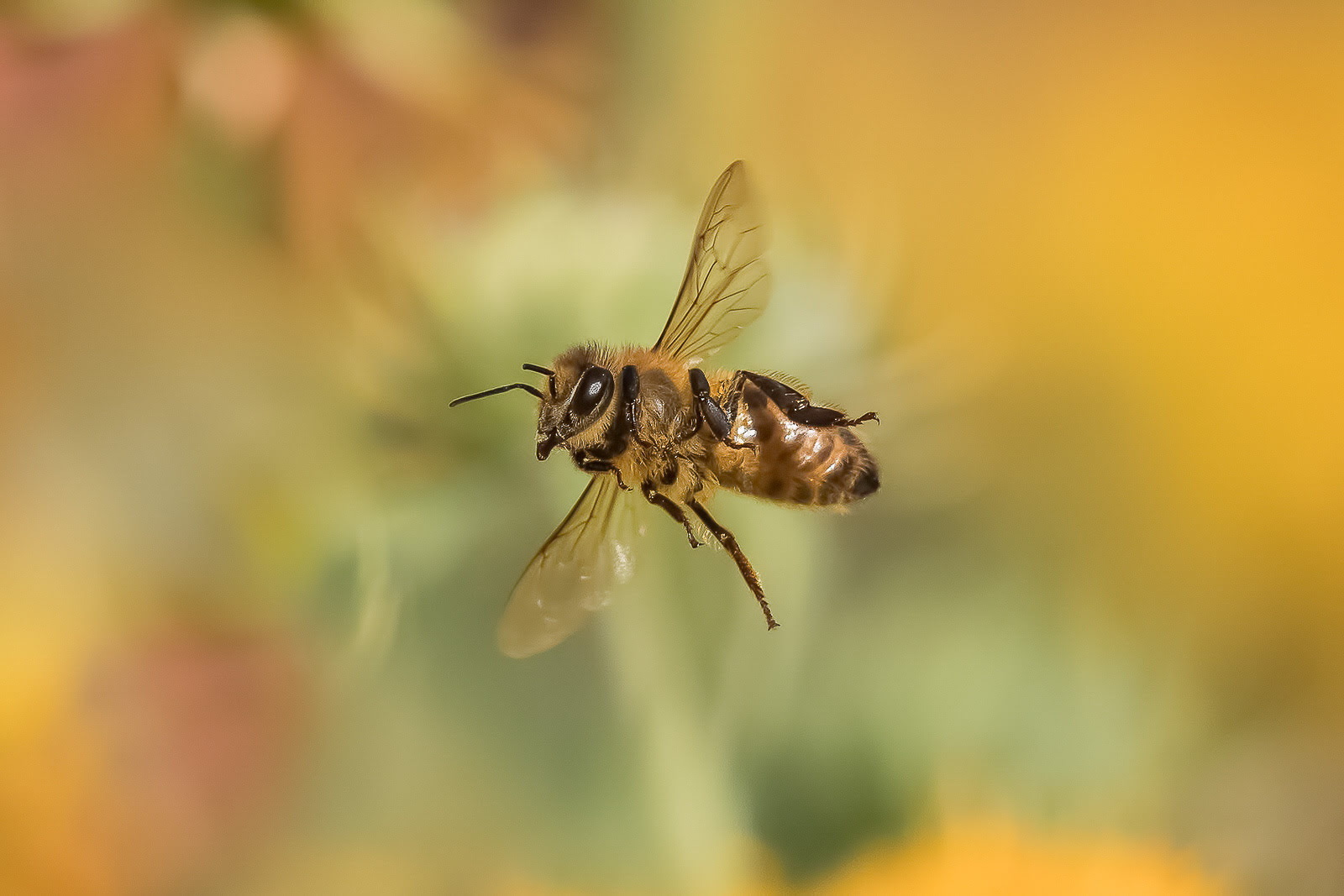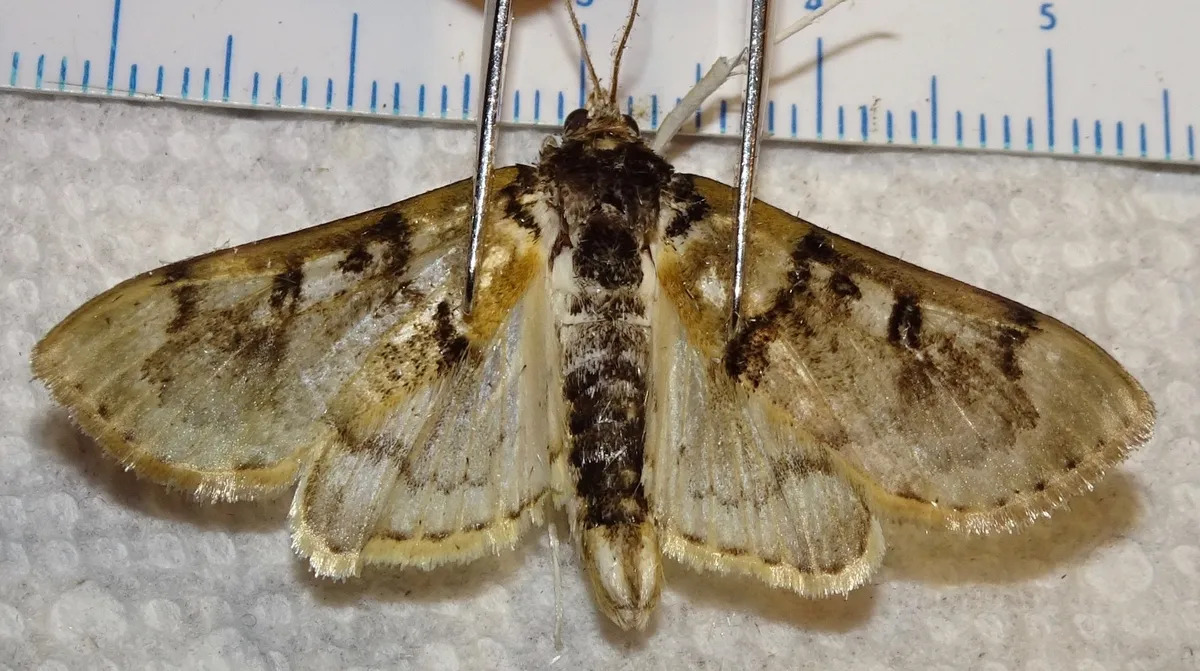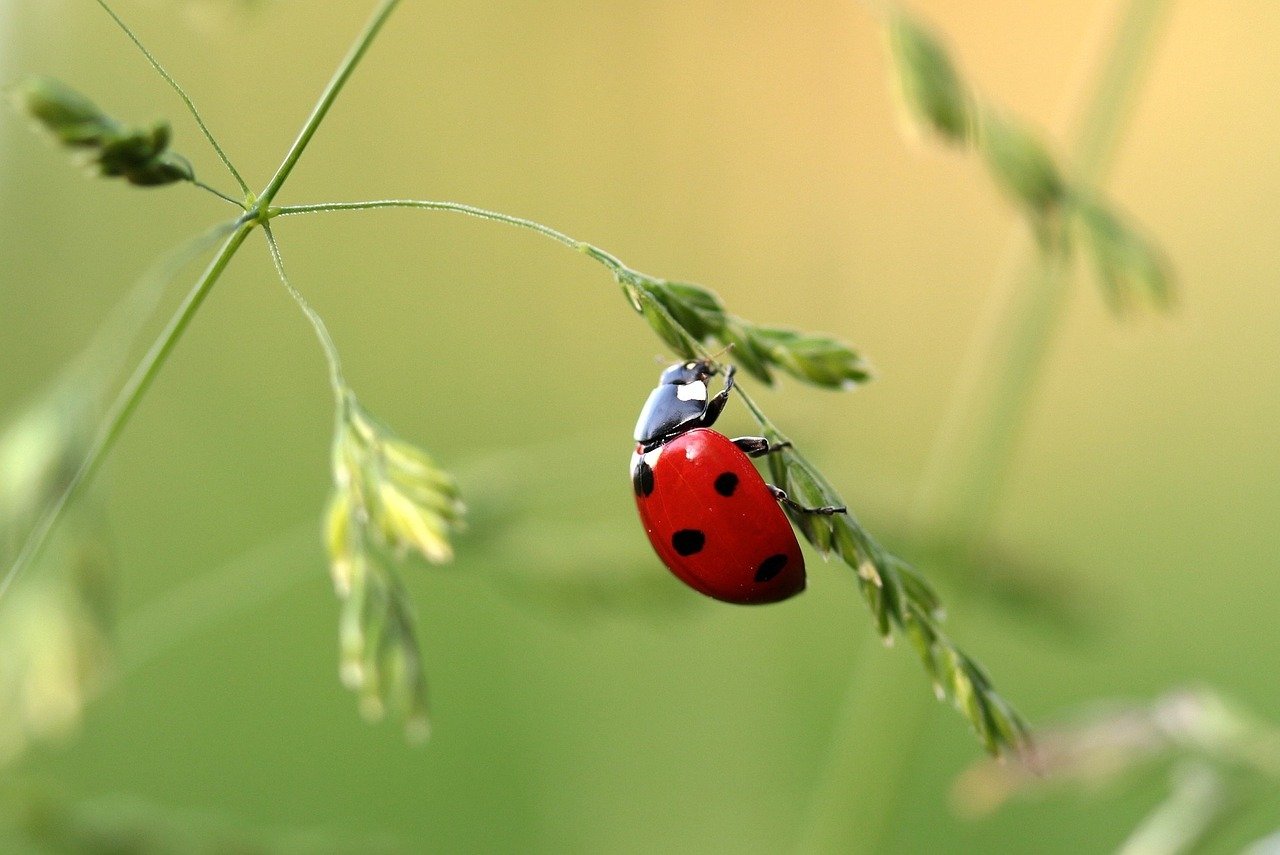Home>Gardening News and Trends>Latest News>How Are The Cell Walls Of Fungi Similar To The Exoskeletons Of Insects


Latest News
How Are The Cell Walls Of Fungi Similar To The Exoskeletons Of Insects
Published: December 5, 2023
Discover the latest news on how the cell walls of fungi share striking similarities with the exoskeletons of insects. Learn about their structural and protective functions.
(Many of the links in this article redirect to a specific reviewed product. Your purchase of these products through affiliate links helps to generate commission for Chicagolandgardening.com, at no extra cost. Learn more)
Table of Contents
Introduction
In the world of biology, fascinating parallels can often be drawn between different organisms despite their apparent differences. One such intriguing comparison can be made between the cell walls of fungi and the exoskeletons of insects. Although seemingly disparate, these structures share some striking similarities in terms of their composition and function.
Fungi, a diverse group of organisms, play a vital ecological role as decomposers and symbiotic partners. They are known for their unique cell walls, which provide a protective barrier and structural support. On the other hand, insects, the largest group of animals on Earth, possess exoskeletons that serve as a shield against the external environment and provide physical support for their bodies.
This article will explore the fascinating similarities between the cell walls of fungi and the exoskeletons of insects. By examining their structure, composition, and functions, we can gain a deeper understanding of the remarkable adaptations that have evolved in these two distinct groups of organisms.
Structure of Fungal Cell Walls
The cell walls of fungi are complex structures that surround individual fungal cells. Unlike the cell walls of plants, which are primarily composed of cellulose, fungal cell walls contain a variety of other compounds, making them more rigid and resistant to degradation.
One of the main components of fungal cell walls is chitin, a tough, flexible polysaccharide. Chitin forms a network of long chains that are cross-linked by other molecules, providing strength and rigidity to the cell wall. It is similar in structure to the exoskeletons of insects, which also contain chitin as a major component.
In addition to chitin, fungal cell walls also contain other polysaccharides such as glucans and mannans. Glucans provide structural support, while mannans, which are found in higher amounts in yeast and filamentous fungi, play a role in cell adhesion and recognition.
The structure of fungal cell walls can vary depending on the specific fungal species and their ecological niche. In some fungi, the cell walls may have additional layers or coatings, such as melanin, proteins, and glycoproteins, which further enhance their strength and resistance to environmental stressors. These additional layers also contribute to the distinctive coloration of certain fungi.
Overall, the structure of fungal cell walls provides a rigid framework that protects the cells from mechanical damage and helps them maintain their shape. It also acts as a barrier against harmful substances, such as enzymes and toxins, produced by other organisms.
It is important to note that the structure of fungal cell walls can also have variations depending on their growth stage and environmental conditions. For example, during certain stages of fungal development, such as spore formation, the cell walls may undergo modifications to allow for dispersal.
Composition of Fungal Cell Walls
The composition of fungal cell walls is diverse and complex, reflecting the wide range of functions these structures serve. In addition to chitin, which is a key component, fungal cell walls contain various other compounds that contribute to their unique properties.
Chitin, a polysaccharide made up of repeating units of N-acetylglucosamine, is the primary component of fungal cell walls. It provides strength and rigidity to the cell wall, much like it does in the exoskeletons of insects. The presence of chitin in both structures indicates a convergent evolution in response to similar functional needs.
In addition to chitin, fungal cell walls contain glucans, which are glucose polymers that provide structural support. These glucans can exist in various forms, such as β-glucans, α-glucans, and mixed-linkage glucans, depending on the fungal species. The arrangement and abundance of these glucans can vary and contribute to the unique characteristics of different fungal cell walls.
Mannans, another type of polysaccharide, are also found in fungal cell walls. These mannose-rich molecules are particularly abundant in yeast and filamentous fungi. Mannans play a role in cell adhesion, recognition, and immune responses, and their composition can vary among different fungal species.
Proteins are an important component of fungal cell walls, contributing to their structural integrity and functionality. These proteins can include enzymes, transporters, and receptors, which are involved in cell wall synthesis, remodeling, and nutrient acquisition. The presence of proteins in fungal cell walls allows for dynamic interactions with the environment and other organisms.
Other compounds, such as lipids, phenolic compounds, and pigments, can also be present in fungal cell walls. These compounds contribute to the overall composition and diverse properties of fungal cell walls, including their resistance to environmental stressors, protection against pathogens, and involvement in signaling pathways.
It is important to note that the composition of fungal cell walls can vary among different fungal species and even within different stages of their life cycle. Environmental factors, such as nutrient availability and stress conditions, can also influence the composition and structure of fungal cell walls, allowing for adaptability to changing conditions.
Functions of Fungal Cell Walls
The cell walls of fungi play crucial roles in their survival, growth, and interactions with the environment. These multifaceted functions are a result of the unique composition and structure of fungal cell walls.
One of the primary functions of fungal cell walls is to provide mechanical support and structural integrity to the cells. The rigid nature of the cell wall allows fungi to maintain their shape and withstand external pressure. This is particularly important for filamentous fungi, as their long, branching structures require support to grow and spread.
Fungal cell walls also act as protective barriers, shielding the cells from physical damage, pathogens, and harmful substances. The presence of chitin and other polysaccharides in the cell wall contributes to its toughness and resistance to enzyme degradation, making it difficult for pathogens to penetrate and invade the fungal cells.
Another critical function of fungal cell walls is their involvement in nutrient acquisition. The cell wall acts as a semi-permeable barrier, allowing the selective passage of molecules into the cell. Fungi secrete enzymes, such as cellulases and chitinases, onto their cell walls to break down complex organic matter in the environment. The degraded nutrients can then be absorbed through the cell wall for energy and growth.
Fungal cell walls also play a role in cell-to-cell communication and signaling. The presence of proteins and other molecules in the cell wall allows fungi to interact with their surroundings and other organisms. This communication is crucial for coordinating processes such as mating, development, and defense against pathogens.
Furthermore, fungal cell walls contribute to the formation of specialized structures and reproductive organs. For example, in filamentous fungi, the cell walls help in the development of hyphae, which are the elongated branches involved in nutrient uptake and spreading. In spore-producing fungi, the cell walls help in the formation and protection of spores, enabling their dispersal to new environments.
Overall, the functions of fungal cell walls are diverse and essential for the survival and success of these organisms. The cell wall not only provides support and protection but also plays a role in nutrient acquisition, signaling, and reproductive processes. Its dynamic nature allows fungi to adapt to various environmental conditions and interact with the surrounding ecosystem.
Structure of Insect Exoskeletons
Insects, the largest group of animals on Earth, possess a remarkable external structure known as the exoskeleton. The exoskeleton serves as a protective outer covering, providing support, defense, and facilitating various physiological processes for the insect.
The exoskeleton is composed primarily of a tough, flexible polysaccharide called chitin, which is similar in structure to the chitin found in fungal cell walls. Chitin is arranged in layers, forming a rigid framework that covers the entire body of the insect. This chitinous structure acts as a shield, protecting the insect’s internal organs from physical damage and external environmental stressors.
Within the exoskeleton, there are areas that are more flexible and movable, such as the joints or articulations between body segments. These areas are reinforced with protein-rich structures called resilin, which enable the insect’s movement and ensure flexibility. Resilin acts as an elastic material, allowing for the bending and extension of the exoskeleton without causing damage.
The exoskeleton is divided into distinct regions known as sclerites, which are hardened plates or sections that provide additional structural support and protection. Sclerites can vary in size and shape, depending on the insect species and its specific needs. Along with the chitinous layers, the sclerites contribute to the overall durability and stiffness of the exoskeleton.
Insect exoskeletons exhibit a segmented structure, with distinct body segments interconnected by flexible joints. This segmentation allows for greater flexibility and movement in comparison to animals with a rigid internal skeleton. Each body segment typically has a pair of jointed appendages, such as legs or wings, which are also covered by the exoskeleton.
It is important to note that the exoskeleton is not a static structure. Insects undergo molting, a process where they shed their old exoskeleton and grow a new one. During molting, a flexible layer called the epidermis develops beneath the old exoskeleton. The insect then secretes enzymes that break down the chitin, allowing it to separate from the epidermis. The insect can then emerge with a new, larger exoskeleton, providing space for growth.
The structure of the insect exoskeleton offers several advantages, including protection against predators and the ability to resist desiccation. Additionally, the exoskeleton provides structural support for the insect’s body and allows for the attachment of muscles, facilitating movement and locomotion. The segmented nature of the exoskeleton allows for efficient and coordinated movement, enabling insects to navigate diverse habitats and perform specialized behaviors.
Composition of Insect Exoskeletons
The exoskeletons of insects are composed of several key components that contribute to their strength, flexibility, and protective properties. These components work together to create a unique composite material that forms the external covering of insects.
The primary component of insect exoskeletons is chitin, a tough polysaccharide similar to the chitin present in fungal cell walls. Chitin forms the structural framework of the exoskeleton, providing rigidity and resistance to physical damage. It is made up of long chains of N-acetylglucosamine, which are cross-linked together to create a strong network.
In addition to chitin, insect exoskeletons contain proteins, which contribute to their flexibility and toughness. One such protein is called resilin, which is found in areas of the exoskeleton that require elasticity, such as joints and wing hinge areas. Resilin acts as a rubber-like material, allowing for flexibility and efficient movement.
Another protein component found in insect exoskeletons is sclerotin. Sclerotin is responsible for hardening the exoskeleton, providing protection and structural support. It forms cross-links between the chitin chains, increasing the strength and durability of the exoskeleton.
Insect exoskeletons also contain pigments, which give them their characteristic colors and patterns. These pigments are often incorporated into the layers of the exoskeleton, providing camouflage, warning signals, or attractive displays for mating purposes.
Furthermore, the composition of insect exoskeletons can vary depending on the specific insect species and its ecological adaptations. Some insects may have additional layers or coatings on their exoskeletons, such as waxes or hydrocarbons, which provide waterproofing and protection against dehydration.
It is worth mentioning that, similar to fungal cell walls, the composition of insect exoskeletons can also be influenced by environmental factors. Diet, habitat, and developmental stages can all impact the composition and properties of the exoskeleton.
In summary, the composition of insect exoskeletons is a combination of chitin, proteins, pigments, and other compounds. This composite material provides the exoskeleton with strength, flexibility, and protection against physical damage and environmental pressures. The unique combination of these components allows insects to thrive in diverse habitats and fulfill their ecological roles.
Functions of Insect Exoskeletons
The exoskeletons of insects serve a variety of important functions, providing support, protection, and facilitating various physiological processes. The unique structure and composition of insect exoskeletons enable them to fulfill these essential roles.
One of the primary functions of the insect exoskeleton is to provide mechanical support and structure to the body. The rigid chitinous framework supports the internal organs, allowing the insect to maintain its shape and withstand external pressures. The segmented nature of the exoskeleton also provides flexibility and facilitates movement.
Another crucial function of the exoskeleton is protection. The tough outer covering shields the delicate internal organs from physical trauma and potential predators. The exoskeleton acts as a barrier, preventing the entry of pathogens, parasites, and harmful substances into the insect’s body. Certain insect exoskeletons may also have adaptations, such as spines or thorns, for additional defense against predators.
Insect exoskeletons play a key role in preventing desiccation by acting as a waterproof barrier. The chitinous and proteinaceous composition of the exoskeleton, along with wax or hydrocarbon coatings, helps to retain moisture and prevent excessive water loss. This adaptation allows insects to thrive in diverse environments, including arid regions.
Furthermore, the exoskeleton provides support for muscle attachment, facilitating movement and locomotion. Muscles are anchored to the inner surface of the exoskeleton, allowing insects to perform their specialized behaviors, such as walking, flying, or swimming. The flexibility of the exoskeleton, particularly in jointed areas reinforced with resilin, enables efficient movement and agility.
Metabolically, the exoskeleton also plays a role in storage and mineralization. During molting, minerals and nutrients are resorbed from the old exoskeleton and stored within the new one. This allows for efficient resource utilization and helps support the insect’s growth and development.
Additionally, the exoskeleton is involved in sensory functions. Numerous sensory receptors, such as hairs, bristles, or sensilla, are found on the surface of the exoskeleton. These sensory structures detect various stimuli, including touch, sound, temperature, and chemicals, helping insects perceive and respond to their environment.
The exoskeleton also contributes to species recognition and behavior. Insect exoskeletons may have distinctive colors, patterns, or structures, which play a role in mate recognition, sexual selection, and intraspecific communication. Some insects even use their exoskeleton as a means of producing sound, such as in the case of stridulation in crickets.
Overall, the functions of insect exoskeletons are multifaceted, encompassing mechanical support, protection, desiccation resistance, locomotion, metabolic processes, sensory perception, and communication. The exoskeleton is a remarkable adaptation that enables insects to thrive in diverse habitats and successfully fulfill their ecological roles.
Similarities Between Fungal Cell Walls and Insect Exoskeletons
Despite belonging to distinct biological kingdoms, fungal cell walls and insect exoskeletons share several striking similarities in terms of their structure, composition, and function. These similarities are the result of convergent evolution, where different organisms independently develop similar adaptations in response to similar environmental pressures.
One prominent similarity is the presence of chitin in both fungal cell walls and insect exoskeletons. Chitin is a tough, flexible polysaccharide that provides strength and rigidity to these structures. In both cases, chitin forms a network of long chains, which are cross-linked by other molecules, contributing to their mechanical durability and protective nature.
The composition of fungal cell walls and insect exoskeletons also shows commonalities. Both structures contain proteins, such as resilin in insects and glycoproteins in fungi, which play crucial roles in providing flexibility and enhancing the functionality of the respective structures. Proteins in both cases contribute to the overall strength and resilience of the exoskeletons and cell walls.
Furthermore, both fungal cell walls and insect exoskeletons have a layered structure. Fungal cell walls consist of multiple layers, including additional coatings, such as melanin or glycoproteins, which enhance their rigidity and resistance to environmental stresses. Similarly, insect exoskeletons have sclerites, which are hardened plates that provide structural support and protection.
Functionally, both structures serve as protective barriers. Fungal cell walls and insect exoskeletons act as physical shields, guarding against mechanical damage and preventing the entry of harmful agents. They serve as the first line of defense against pathogens, predators, and environmental stressors, contributing to the survival and well-being of the organisms.
Additionally, both structures have roles in facilitating movement and locomotion. Fungal cell walls provide structural support for the cells, allowing them to maintain their shape and integrity while growing and spreading. Insect exoskeletons support the attachment of muscles, allowing for coordinated movement and efficient locomotion.
These similarities highlight the remarkable convergent evolution between fungal cell walls and insect exoskeletons. Despite originating from different lineages, the need for structural support, protection, and mobility has driven the independent development of analogous adaptations in both groups.
It is important to acknowledge that there are also notable differences between fungal cell walls and insect exoskeletons. For instance, fungal cell walls are often more metabolically active and can undergo modifications to support growth and reproduction. On the other hand, insect exoskeletons have specialized features, such as jointed appendages and sensory structures, which are specific to the insect lineage.
Overall, the similarities between fungal cell walls and insect exoskeletons highlight the fascinating convergence in their structure, composition, and function. These convergent adaptations demonstrate the remarkable resilience and adaptability of living organisms, allowing them to thrive and survive in diverse ecological niches.
Conclusion
The comparison between fungal cell walls and insect exoskeletons reveals fascinating similarities in their structure, composition, and function. Both structures share a common reliance on chitin, a tough polysaccharide, to provide strength, rigidity, and protection. The presence of proteins in both fungal cell walls and insect exoskeletons contributes to their flexibility and durability. Additionally, the layered structure and the role as protective barriers highlight their convergent evolution in response to similar environmental pressures.
Fungal cell walls and insect exoskeletons serve crucial functions in the organisms’ survival and success. They provide mechanical support and structure, allowing for growth and movement. Additionally, these structures act as shields, protecting against physical damage, pathogens, and harmful substances. Both play a role in nutrient acquisition, signaling, and reproductive processes. The similarities in their functions reveal the importance of these adaptations in enabling organisms to thrive in their respective ecological niches.
While there are notable differences between fungal cell walls and insect exoskeletons, such as metabolic activity and specialized features specific to each group, the convergent evolution between these structures highlights the remarkable adaptability of living organisms. By independently developing analogous adaptations, fungi and insects demonstrate their ability to respond to similar environmental pressures and fulfill their ecological roles.
Studying the similarities between fungal cell walls and insect exoskeletons provides valuable insights into the intricate workings of nature and the interconnectedness of different organisms. These structures not only serve as physical barriers but also play critical roles in nutrient cycling, ecological interactions, and the overall functioning of ecosystems.
Further research into the comparative biology of fungal cell walls and insect exoskeletons can deepen our understanding of the fundamental principles that govern the natural world. By uncovering the mechanisms behind these adaptations, scientists can potentially develop innovative solutions for various applications, including materials science, agriculture, and human health.
The study of these remarkable structures serves as a testament to the immense diversity and ingenuity of life on Earth. The convergence between fungal cell walls and insect exoskeletons highlights the shared challenges and solutions that have arisen throughout evolution. It is a testament to the incredible adaptability and resilience of living organisms and the interplay between form and function in the natural world.
